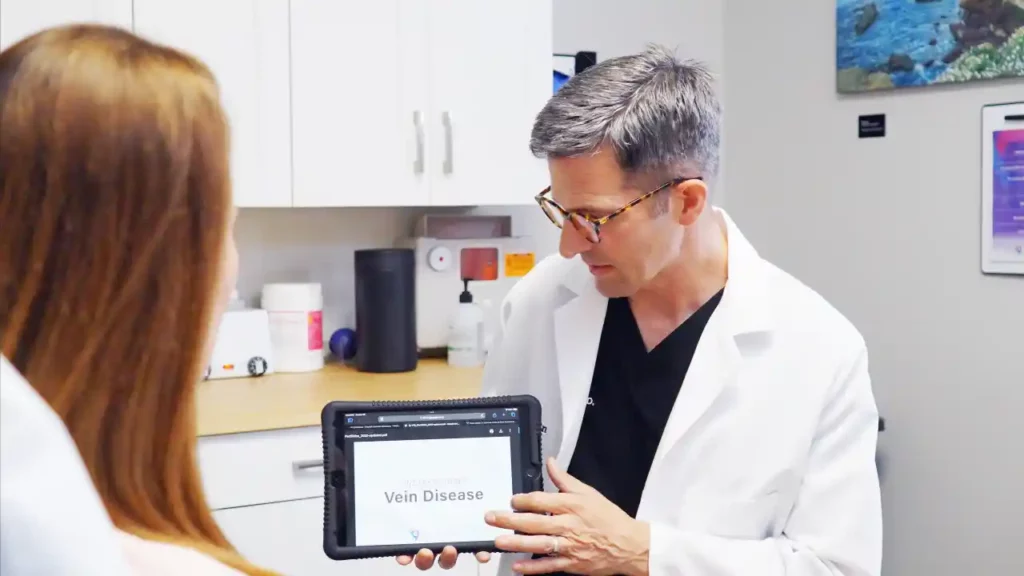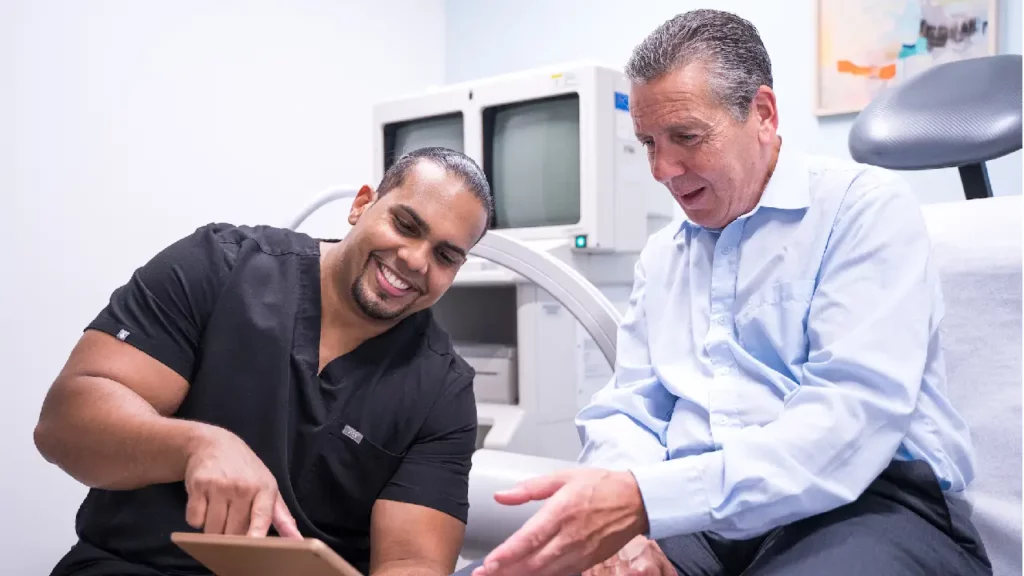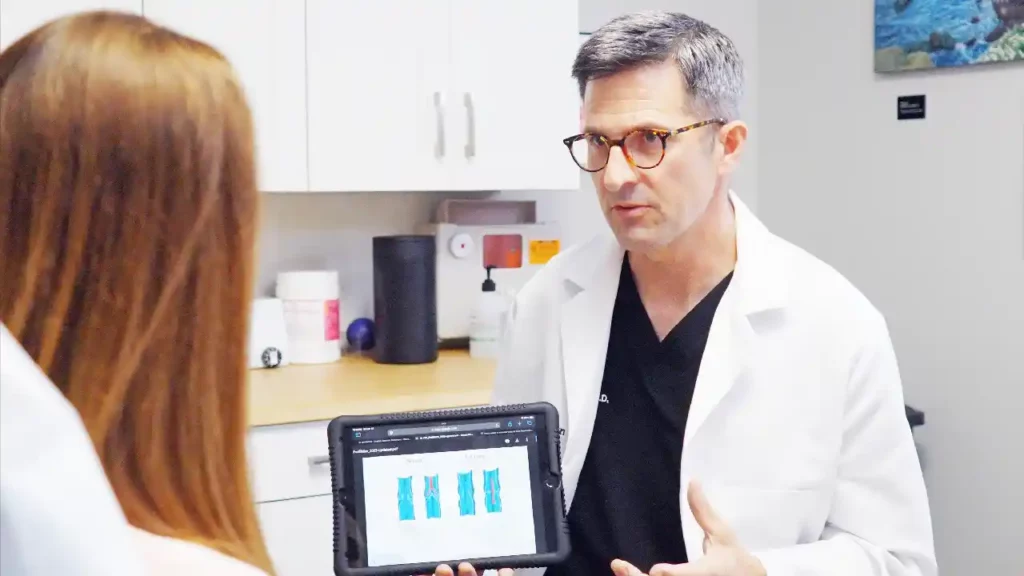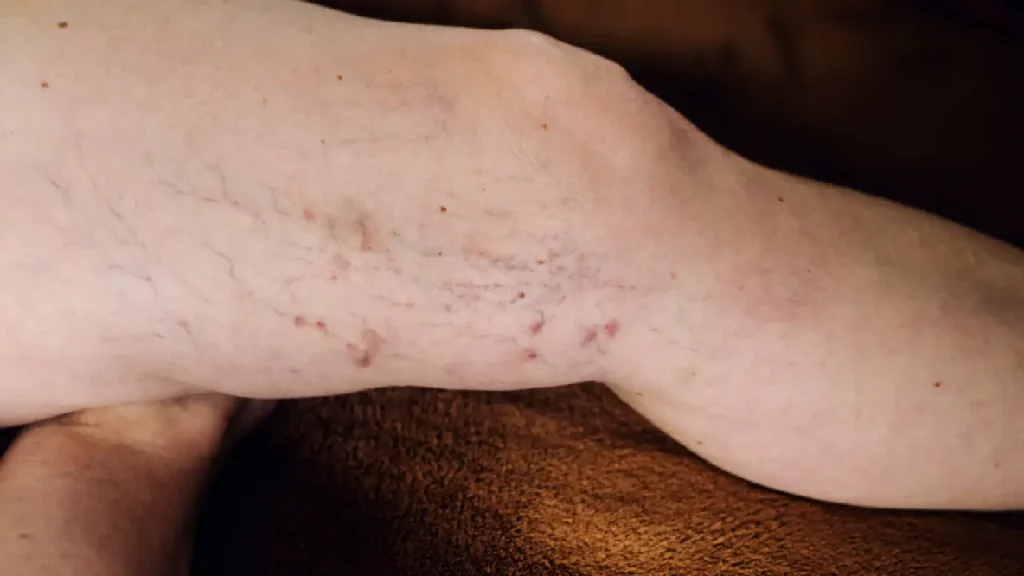At Vein Doctor for Women, we understand the importance of maintaining optimal vein health. Veins play a crucial role in returning blood to the heart, and proper circulation is vital for well-being. One of the most effective ways to support your vein health is through exercise. In this article, we explore tips to improve circulation and enhance vein health. Our board-certified vein doctors have curated these tips to help you take proactive steps toward healthier veins.
Tip 1: Walking
Walking is one of the easiest and most accessible forms of exercise for improving vein health. It enhances blood circulation by engaging the calf muscles, which act as pumps to push blood back towards the heart. Regular walking can significantly reduce the risk of developing vein-related issues such as varicose veins and chronic venous insufficiency.
Benefits of Walking for Vein Health
- Improves Blood Flow: Regular walking promotes better blood circulation, reducing the risk of blood pooling in the veins. This can help prevent the development of varicose veins.
- Strengthens Muscles: Walking strengthens the muscles in your legs, providing better support for your veins and aiding in the prevention of varicose veins.
- Low Impact: It’s a low-impact exercise, making it suitable for individuals of all fitness levels, including those who may be at higher risk for vein problems.
How to Get Started:
- Start with a gentle warm-up to prepare your muscles for exercise.
- Begin with short walks, gradually increasing your distance and pace.
- Aim for at least 30 minutes of walking daily.
- Wear supportive shoes to protect your feet and ankles.
- Finish your walk with a cool-down period to help your muscles recover.
- Stay hydrated by drinking water before, during, and after your walk.
Tip 2: Leg Elevation
Elevating your legs is a simple yet effective way to improve circulation and reduce swelling. This can help alleviate the symptoms of vein disorders such as varicose veins and spider veins.
Benefits of Leg Elevation:
- Reduces Swelling: Elevating your legs above heart level helps reduce swelling and discomfort by allowing gravity to assist in returning blood to the heart.
- Improves Blood Flow: It encourages blood to flow back towards the heart, reducing the pressure on veins and decreasing the likelihood of blood pooling in the legs.
How to Practice Leg Elevation:
- Elevate your legs several times a day for 15-20 minutes each session.
- Use pillows or a recliner to keep your legs comfortably elevated.
- Make sure your legs are higher than your heart for the best results.
- Make it a routine part of your day, especially after prolonged periods of standing or sitting.
- Use this time to relax and practice deep breathing or mindfulness meditation.
- Avoid crossing your legs when sitting to prevent restricting blood flow.
Tip 3: Strength Training
Incorporating strength training into your exercise routine can significantly benefit your vein health. Stronger muscles provide better support for your veins, aiding in efficient blood circulation and reducing the risk of vein-related problems.
Benefits of Strength Training:
- Enhances Muscle Pump: Strength training exercises like calf raises and leg presses improve the muscle pump action, facilitating blood flow and reducing the risk of blood pooling.
- Reduces Venous Pressure: Building muscle helps reduce pressure on veins, preventing vein-related issues such as varicose veins and deep vein thrombosis.
- Overall Health: It contributes to overall physical health and fitness, which is beneficial for your veins and cardiovascular system.
Strength Training Tips:
- Include exercises that target the lower body, such as squats, lunges, and calf raises.
- Ensure you maintain proper form to avoid injuries.
- Consider working with a trainer to learn the correct techniques.
- Aim for two to three strength training sessions per week.
- Allow your muscles time to recover between sessions.
Tip 4: Yoga
Yoga is an excellent exercise for improving vein health. It combines physical postures, breathing exercises, and relaxation techniques that enhance circulation and reduce stress, both of which are crucial for maintaining healthy veins.
Benefits of Yoga for Vein Health:
- Improves Flexibility: Yoga enhances flexibility and muscle strength, aiding in better circulation and reducing the risk of vein-related issues.
- Reduces Stress: Stress can negatively impact vein health, and yoga helps in managing stress effectively through relaxation techniques and mindful breathing.
- Encourages Blood Flow: Specific yoga poses encourage blood flow from the legs back to the heart, helping to reduce swelling and improve overall circulation.
How to Get Started with Yoga:
- If you’re new to yoga, consider joining a beginner class to learn the basics.
- Aim to practice yoga several times a week to experience its full benefits.
- Use yoga props like blocks and straps to assist with poses and ensure comfort.
- Incorporate deep breathing exercises to enhance relaxation and improve blood flow.
- Drink water before and after your yoga session to stay hydrated.
Tip 5: Swimming
Swimming is a fantastic, low-impact exercise that provides a full-body workout. It’s particularly beneficial for vein health as it reduces the gravitational pressure on your veins while enhancing circulation.
Benefits of Swimming for Vein Health:
- Low Impact: Swimming reduces the stress on your joints and veins, making it an ideal exercise for those with vein issues or joint pain.
- Enhances Circulation: The horizontal position in swimming promotes better blood flow throughout the body, including the legs.
- Builds Muscle: It strengthens muscles without putting excessive pressure on your veins, providing overall support for your circulatory system.
How to Incorporate Swimming:
- Start with a gentle warm-up swim to prepare your muscles.
- Aim for swimming sessions a few times a week to maintain consistency.
- Include different strokes, such as freestyle, breaststroke, and backstroke, to work various muscle groups and enhance overall fitness.
- Use supportive swimwear to ensure comfort during your sessions.
- Consider using swim aids like kickboards and pull buoys to vary your workout.
- Finish with a cool-down swim to help your muscles recover.
- Drink water before and after swimming to stay hydrated.
Tip 6: Cycling
Cycling is another excellent exercise to promote vein health. Whether you prefer outdoor biking or stationary cycling, this activity effectively improves circulation and strengthens the lower body.
Benefits of Cycling for Vein Health:
- Improves Blood Flow: Cycling engages the calf muscles, aiding in blood circulation and reducing the risk of blood pooling.
- Strengthens Legs: It strengthens the muscles in your legs, providing better support for your veins and helping to prevent vein-related issues.
- Low Impact: Cycling is gentle on the joints, making it suitable for people with vein issues or those looking for a low-impact exercise option.
Cycling Tips:
- Aim for at least 30 minutes of cycling several times a week.
- Start with a moderate pace and gradually increase the intensity as you build endurance.
- Ensure your bike is well-maintained, and always wear a helmet for safety.
- Check your bike’s seat and handlebar height for a comfortable riding position.
- Include a warm-up and cool-down period in your cycling routine to prevent injuries.
- Drink water before, during, and after your cycling session to stay hydrated.
- If cycling outdoors, vary your route to keep your workouts interesting and challenging.
Tip 7: Staying Hydrated
Staying hydrated is a simple yet often overlooked tip for improving vein health. Proper hydration is essential for maintaining healthy blood circulation and preventing venous issues.
Benefits of Staying Hydrated:
- Enhances Blood Flow: Adequate hydration ensures smooth blood flow and prevents blood from becoming too thick, which can lead to circulation problems.
- Reduces Swelling: Proper hydration can help reduce swelling and discomfort in the legs, as it supports the balance of fluids in the body.
- Overall Health: It supports overall bodily functions, which indirectly benefits vein health. Hydration is crucial for maintaining healthy skin and tissues.
Hydration Tips:
- Aim to drink at least eight glasses of water daily.
- Adjust your intake based on your activity level and the climate you live in.
- Keep track of your water intake to ensure you’re staying hydrated.
- Use a water bottle with measurements to help you monitor your consumption.
- Include herbal teas and water-rich fruits and vegetables in your diet.
- Set reminders on your phone or use a hydration app to prompt you to drink water.
- Drink water before, during, and after exercise to stay hydrated.
Exercise for Vein Health with Vein Doctor for Women
Exercise is a powerful tool for improving vein health, and incorporating these tips into your daily routine can make a significant difference. At Vein Doctor for Women, we are dedicated to providing you with the best care and guidance for maintaining healthy veins. Remember, regular check-ups are also crucial for optimal vein health. For personalized advice and comprehensive vein care, schedule a consultation with us today.
